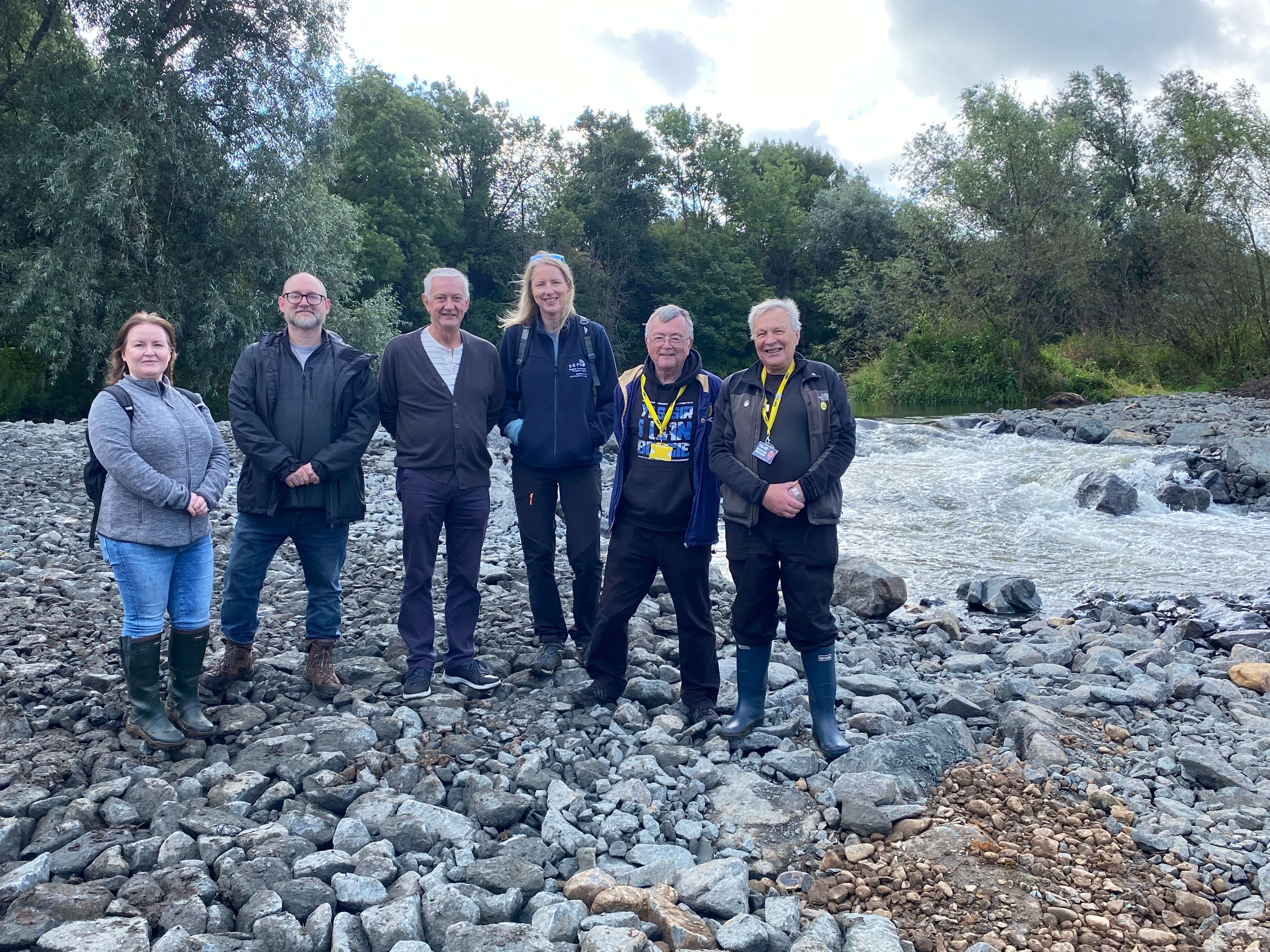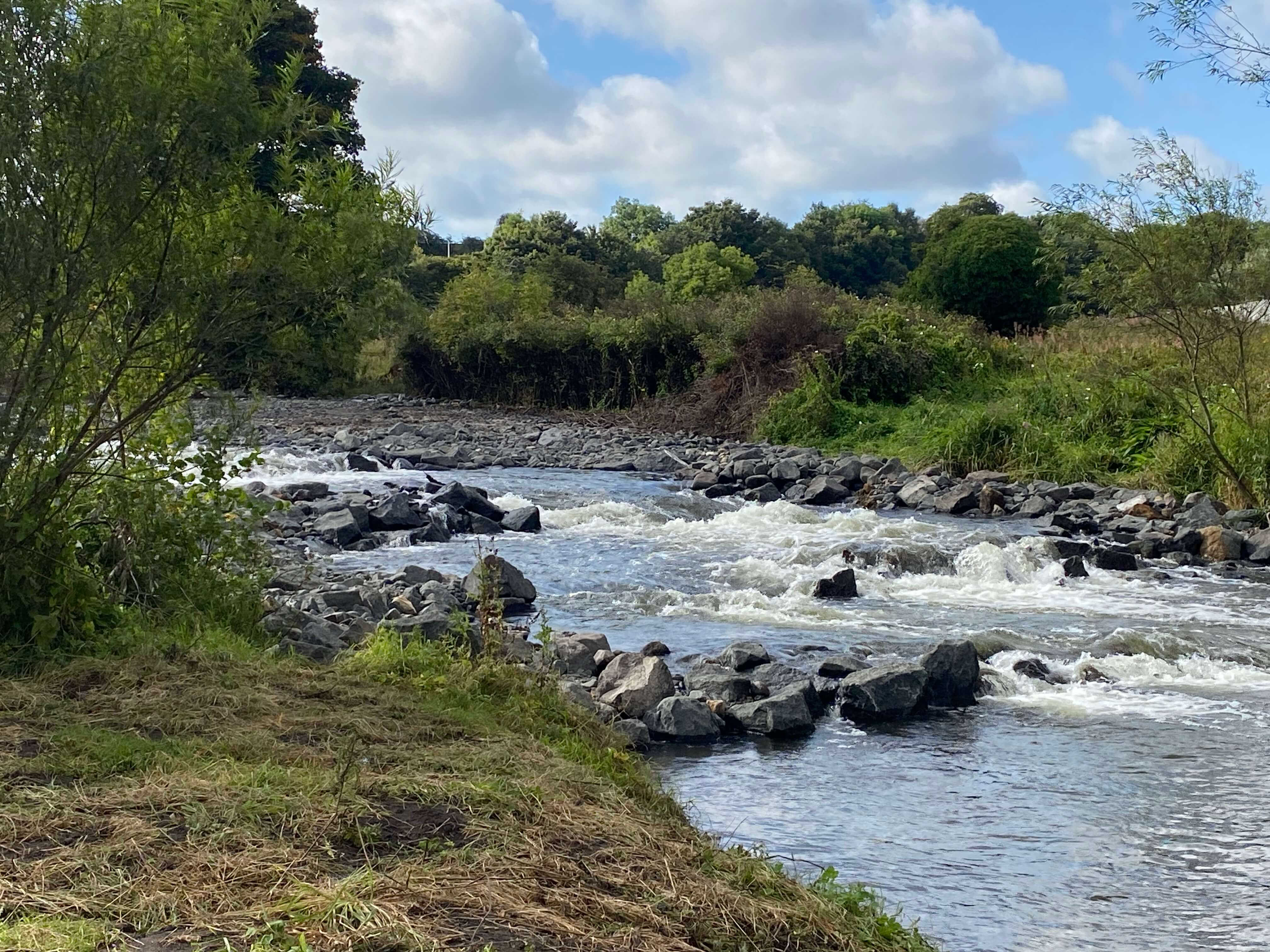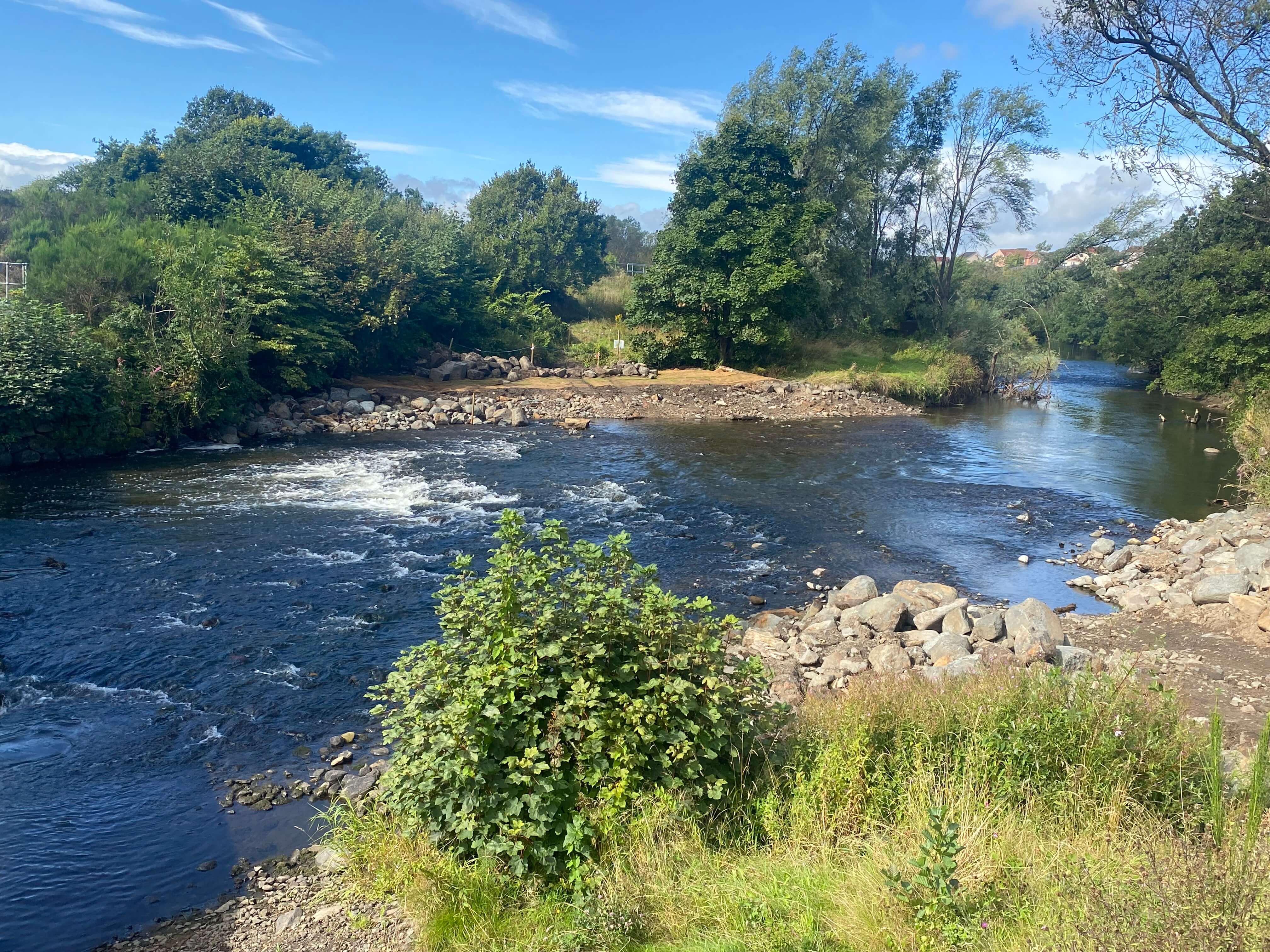Published Date: Aug 30th, 2024

Partners involved in the Restoring the River Leven project have been reflecting on a summer of progress as the latest phase nears completion.
Since the beginning of July, there has been a hive of activity on site as the project group carried out a series of modifications to make it easier for fish to migrate up and downstream on the stretch between the Kirkland and Burn Mill dams.
The project has been an excellent example of partnership working involving Fife Council, Fife Coast and Countryside Trust and SEPA’s Water Environment Fund.
At Kirkland Dam, works on the ‘nature-like’ rock ramp have almost been finished, with rocks and boulders being added to create a rough surface on the face of the dam sloping down to the natural riverbed below.
This has helped to remove the jump or step which was restricting the movement of fish and has provided areas of faster and slower flowing water to help the fish move up and down past the structure more easily.
Localised fish rescues have also been undertaken (thanks to Forth Rivers Trust) while the in-channel works have been ongoing, and invasive plant species including Himalayan Balsam have been removed from the works site as part of the process.

Meanwhile, Burn Mill Dam has been fully removed and riverbanks at the same location have been stabilised, meaning fish, water and sediment can now move freely and more naturally through this section of the lower river.

Local councillors and members of the project Governance Group visited the site in person this week to see what’s been going on first hand, and hear more about what’s been carried out and the vision for the River Leven going forward.
Jeremy Harris, CEO at Fife Coast and Countryside Trust, said: “This is another great Fife example of different organisations coming together to deliver something good, and we are so grateful to the various partners and contractors who have helped make it happen.
“The steps taken to make these carefully considered interventions in the way the river flows will invite back the various species that use this river.
“At FCCT we’re keen to point out that we consider people to be among those species we hope will come back and reap the benefits of connecting with this freshly thriving ecosystem through the heart of Levenmouth.”
It has been an eventful couple of months for The Leven Programme as the project has progressed.
An old car that had been submerged by the impounded flow at Burn Mill Dam had to be removed and disposed of, while the dam removal itself was streamed live across the continent thanks to Dam Removal Europe, where local team members were able to talk about the history of the river, the restoration works being carried out, and the benefits of removing the barrier for improved fish migration.
And eagle-eyed visitors will have spotted helicopters being used last week to relocate some of the trees that had been removed from further upstream to an area of wetland to the south of the river.
That process will provide additional perches and resting places for the heron and other wading birds in the area, and a number of birds have already been spotted making use of the new features.
Following completion of the construction phase in the next few weeks, it will take some time for the excavated areas of land and the newly constructed riverbanks to re-stabilise, with vegetation likely to regrow over the next couple of growing seasons.
Lynda Gairns, River Restoration Specialist at SEPA, said: “SEPA are delighted to see the progress of the works on the River Leven.
“The removal of Burn Mill Dam has allowed the river to naturally recover with new pools and riffles forming.
“The nature like rock ramp is attracting lots of attention from local walkers and we are already receiving positive feedback on how it looks and the benefits it will bring to fish.
“We look forward to completing the works in the coming month and are eager to see what is next for the wider Leven programme.”
Notes:
Our group photo shows from left to right: Fiona Skiffington, FCCT project manager; Ross Spalding, Fife Council Service Manager (Climate Change and Zero Waste); Councillor Tom Adams; Lynda Gairns, SEPA River Restoration Specialist; Councillor David Alexander and Councillor Ken Caldwell alongside Kirkland Dam.
More information about The Leven Programme can be found via Home | The Leven Programme.
SEPA administers the Water Environment Fund (WEF) on behalf of the Scottish Government and works in partnership with local authorities, land and structure owners, fishery trusts and conservation bodies to deliver an annual programme of river restoration projects.
The Water Environment Fund (WEF) delivers projects which will derive the greatest benefit to Scotland’s rivers and neighbouring communities.
Working in partnership with local authorities, WEF is used to create better river environments for wildlife and people. We do this by restoring damaged river corridors to enhance the ecological value of the river and improve public amenity and well-being opportunities, including the reduction of flood risk.
More information about WEF is available at Water environment fund | Scottish Environment Protection Agency (SEPA)

